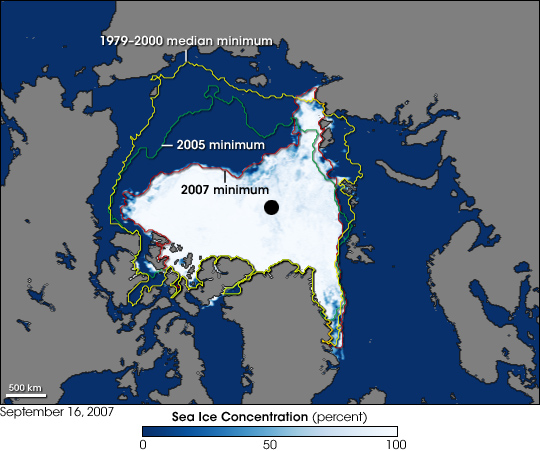Alla yksi kokonainen sähköposti, ei siis mikään irrallinen asiayhteydestään otettu lause. Jos tuo ei ole mittaustulosten vääristelyä haluttuun suuntaan niin ei sitten mikään. Ei tuolla hommalla ainakaan tieteentekemisen kanssa ole mitään tekemistä.
From: Tom Wigley <wigley@xxxxxxxxx.xxx>
To: Phil Jones <p.jones@xxxxxxxxx.xxx>
Subject: 1940s
Date: Sun, 27 Sep 2009 23:25:38 -0600
Cc: Ben Santer <santer1@xxxxxxxxx.xxx>
<x-flowed>
Phil,
Here are some speculations on correcting SSTs to partly
explain the 1940s warming blip.
If you look at the attached plot you will see that the
land also shows the 1940s blip (as I'm sure you know).
So, if we could reduce the ocean blip by, say, 0.15 degC,
then this would be significant for the global mean -- but
we'd still have to explain the land blip.
I've chosen 0.15 here deliberately. This still leaves an
ocean blip, and i think one needs to have some form of
ocean blip to explain the land blip (via either some common
forcing, or ocean forcing land, or vice versa, or all of
these). When you look at other blips, the land blips are
1.5 to 2 times (roughly) the ocean blips -- higher sensitivity
plus thermal inertia effects. My 0.15 adjustment leaves things
consistent with this, so you can see where I am coming from.
Removing ENSO does not affect this.
It would be good to remove at least part of the 1940s blip,
but we are still left with "why the blip".
Let me go further. If you look at NH vs SH and the aerosol
effect (qualitatively or with MAGICC) then with a reduced
ocean blip we get continuous warming in the SH, and a cooling
in the NH -- just as one would expect with mainly NH aerosols.
The other interesting thing is (as Foukal et al. note -- from
MAGICC) that the 1910-40 warming cannot be solar. The Sun can
get at most 10% of this with Wang et al solar, less with Foukal
solar. So this may well be NADW, as Sarah and I noted in 1987
(and also Schlesinger later). A reduced SST blip in the 1940s
makes the 1910-40 warming larger than the SH (which it
currently is not) -- but not really enough.
So ... why was the SH so cold around 1910? Another SST problem?
(SH/NH data also attached.)
This stuff is in a report I am writing for EPRI, so I'd
appreciate any comments you (and Ben) might have.
Tom.





